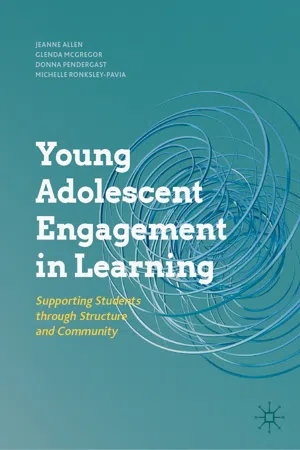Introduction
Young Adolescent Learners
Box 1.1 Summary of key changes during early adolescence
Physical development |
• In early adolescence, the body undergoes more physical change than at any other time, apart from the age of birth to two years; • The rate of growth is rapid and uneven, with each individual following a similar pattern; • Changes include increases in height, weight, and internal organ size as well as changes in skeletal and muscular systems; • Puberty occurs at the outset of early adolescence, triggered by the release of hormones which lead to the development of primary sex characteristics (genitalia) and secondary sex characteristics (e.g., breast development in girls, facial hair in boys); • Increased hormone production affects all aspects of the body, especially skeletal growth, hair production, and skin changes; • Growth spurts typically occur about two years earlier in girls than boys. |
Social development |
• Adolescents establish a sense of identity and establish a role and purpose; • Body image is a key factor in developing a sense of self and identity; • Family and, increasingly, peers play an important role in assisting and supporting the adolescent to achieve adult roles; • Social and emotional development are closely intertwined as young people search for a sense of self and personal identity. |
Emotional development |
• Individuals develop in the way they think and feel about themselves and others; • The development and demonstration of individual emotional assets, such as resilience, self-esteem and coping skills, are heightened; • Schools are important sites for social and emotional learning and have developed policies and programs around student wellness, often with a focus on a strengths-based approach. |
Cognitive development |
• Cognition is the process involving thought, rationale and perception; physical changes of the brain that occur during adolescence follow typical patterns of cognitive development; • Cognitive development is characterised by the development of higher-level cognitive functioning that aligns with the changes in brain structure and function, particularly in the prefrontal cortex region; • Structural and functional brain changes affect the opportunity for increased memory and processing and may also contribute to vulnerability, such as risk-taking and increased sensitivity to mental illness; • Sensitive brain period, that is, a time when brain plasticity is heightened. During this time, there is an opportunity for learning and cognitive growth as the brain adapts in structure and function in response to experiences. |
